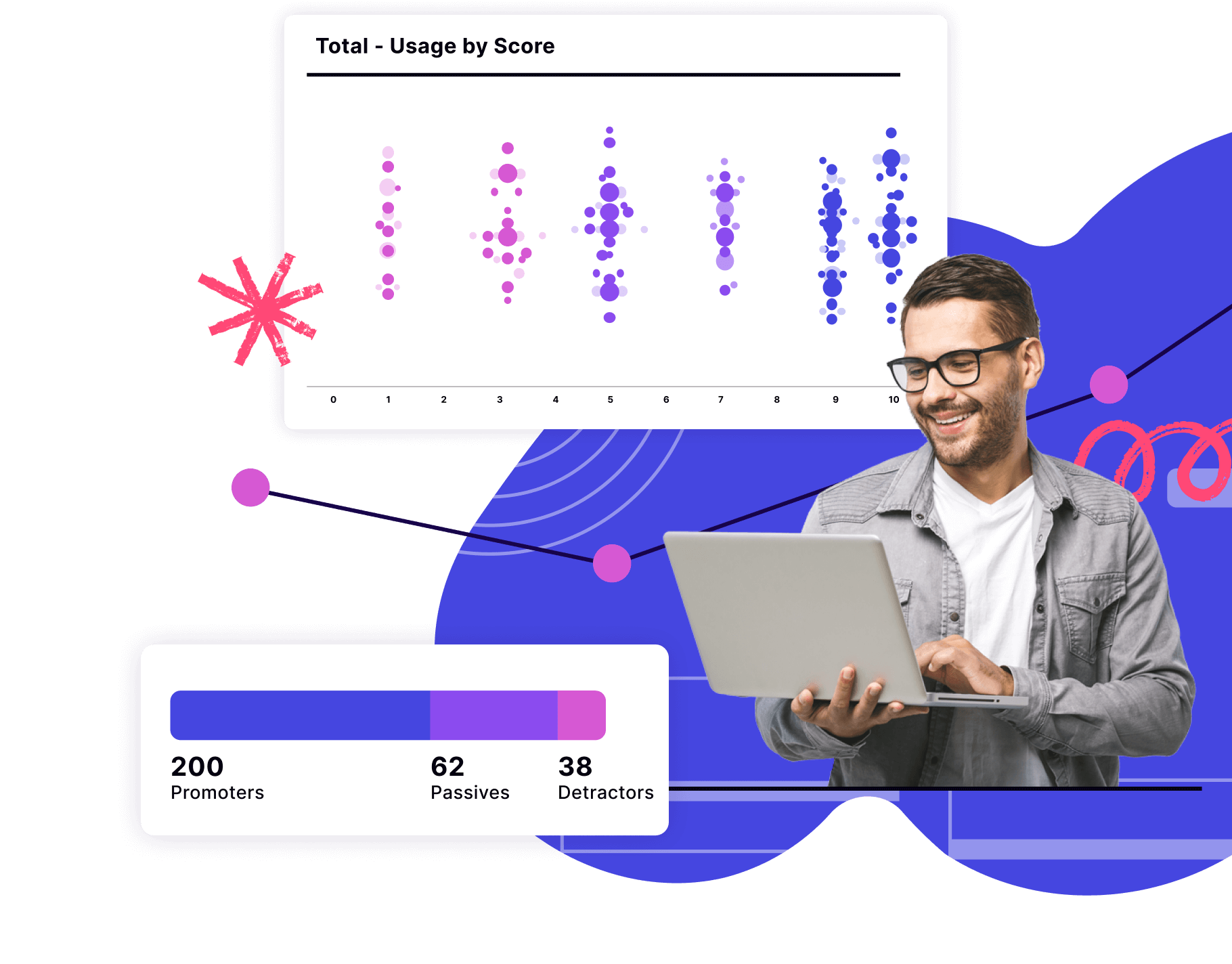
Net Promoter Score (NPS)
A metric measuring customers’ propensity to advocate for a brand, which, in turn, serves as a proxy for customer happiness and, eventually, business growth.
Last updated: March 27, 2024
Dive deeper
Table of Contents
What is Net Promoter Score?
Net Promoter Score, or NPS, is a metric companies use to measure their customers’ propensity to advocate for the brand, which, in turn, serves as a proxy for customer happiness and, eventually, business growth.
Because NPS reduces such a large question to a single-question (“How likely is it that you’d recommend this brand to a friend or colleague?”) survey with an answer limited to an 11-point (0-10) scale, many business leaders debate its merits. Despite grievances around oversimplification, NPS has emerged as one of the most pervasive KPIs for customer satisfaction in business today.
How to calculate Net Promoter Score?
The calculation is predictably simple. A company conducts an NPS survey among its customers. It marks scores of 9 or 10 as “Promotors,” 7 or 8 as “Passives,” and 0 through 6 as “Detractors.” Then it subtracts the percentage of Detractors from the percentage of Promoters to produce its Net Promoter Score.
Here’s a simple formula:
[(# Promoters / # Respondents) – (# Detractors / # Respondents)] * 100
If a company has more Detractors than Promoters, they’ll quickly find that NPS can dip into negative territory. While not ideal, of course, it’s not uncommon to see a negative NPS. Because NPS scores vary greatly by vertical market, it’s important for companies to benchmark themselves against the most similar cohorts for which they can find data. It’s also important for companies to benchmark themselves against themselves, tracking NPS movement over time. Mapping changes in score to business events, like product changes and marketing campaigns, can help companies understand what developments impact customer satisfaction.
What factors impact a company’s Net Promoter Score?
It’s important, particularly for software companies, to understand the distinction between account-level NPS and user-level NPS. User NPS captures the score of the person who uses the software regularly. Because that individual is closest to the product, their score is likely higher than the account score, because the latter will be mitigated by less-informed perspectives of those who may be more distant from the product.
NPS tracking can get sophisticated quickly. The medium over which the score is captured can also bias results. An NPS survey conducted within the product itself is likely to produce a higher score than an emailed survey, because the former is capturing a higher concentration of active, engaged users.
None of this context is intended to suggest that user NPS or in-app NPS is more or less valuable than their counterparts. Only that it’s helpful to be aware of biases and to be consistent when benchmarking over time.
The method of collecting survey data isn’t the only factor that impacts an NPS score. The buying experience, onboarding process, and, of course, the product itself all have the potential to create Detractors and Promoters alike. To this end, understanding which pages or features in the product increase customer satisfaction and guiding users to those features is one of the most reliable ways to improve NPS over time. For example, Cision Trendkite found that depth of use had a significant impact on customer satisfaction–their Promoters used a much larger set of features in the application compared to Detractors and Passives.
Where can I learn more about Net Promoter Scores?
For those looking to dig a little deeper, there are a number of books on the subject, beginning with the one that started it all: Fred Reichheld’s “The Ultimate Question” (which is now available as a 2.0 edition) as well as free resources on how to improve NPS score. There are premium NPS analytics and insights solutions and free NPS survey tools available and any number of websites that publish NPS benchmarks by industry.
